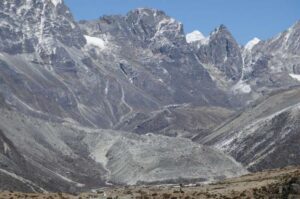The Himalayan ice’ future has been previously believed to be at stake, but recent data shows that they’re more resilient to global warming.Â
Rock glaciers are somehow similar to “real” ice glaciers. They’re a mix of rock and ice, triggered by gravity to move downhill. Scientists found that these rock glaciers will melt more slowly as temperature rise.
Here is what you need to know.
Himalayan Ice Helped by Rock Glaciers
A team of researchers led by Dr Darren Jones from the University of Exeter offers intriguing new data about the Himalayan ice.Â
The team’s findings

Researchers discovered that rock glaciers already account for approximately one twenty-fifth of Himalayan glacial ice. Such a result will increase as exposed glaciers will melt, and some will turn into rock glaciers.
Himalayan glaciers play a significant role in controlling water supplies for hundreds of millions of people. So you can understand why they’re so important.
According to previous data, the glaciers lost around 25 % of their mass over the last century. The reason? Climate change is the only one to blame.
However, as unfortunate as those events could be, the recent data show that not all glaciers will melt the same way.
“These slow-moving glaciers are well insulated, and as a result, they are more resilient to global warming than “true” glaciers,” explained Prof. Stephan Harrison of the University of Exeter.
Furthermore, the team has come up with the first estimate of the importance and number of rock glaciers in the Himalayas. That includes around 25,000 rock glaciers in the area, a total of approximately 51 cubic kilometres of ice (41-62 trillion litres of water).
More research into the Himalayan rock glacier is much needed. We need to develop climate change adaptation procedures and ensure that this highly-populated area can reach sustainable development goals.
We also need to raise climate change awareness and support the research field.












Leave a Reply